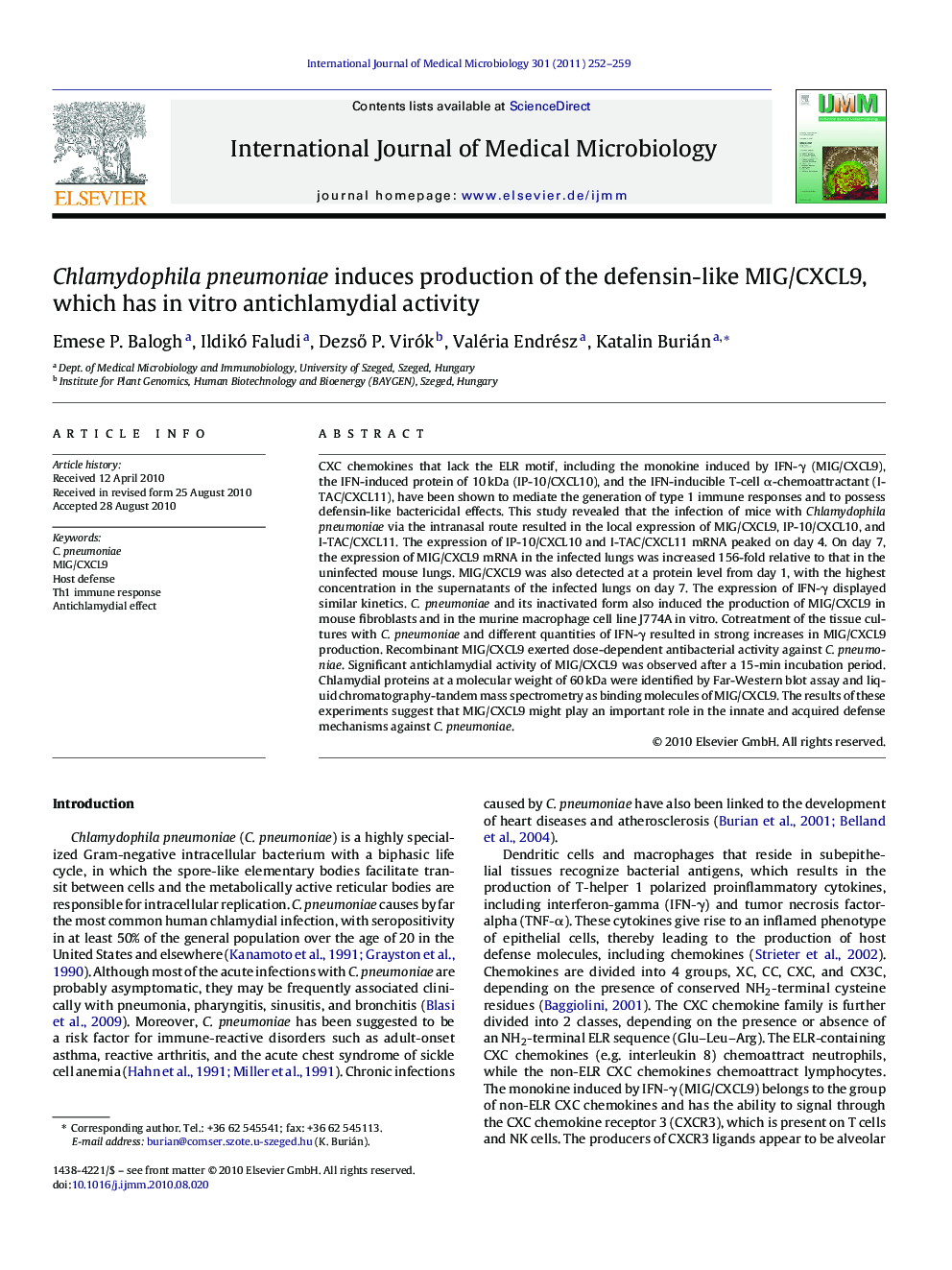| Article ID | Journal | Published Year | Pages | File Type |
|---|---|---|---|---|
| 2054485 | International Journal of Medical Microbiology | 2011 | 8 Pages |
CXC chemokines that lack the ELR motif, including the monokine induced by IFN-γ (MIG/CXCL9), the IFN-induced protein of 10 kDa (IP-10/CXCL10), and the IFN-inducible T-cell α-chemoattractant (I-TAC/CXCL11), have been shown to mediate the generation of type 1 immune responses and to possess defensin-like bactericidal effects. This study revealed that the infection of mice with Chlamydophila pneumoniae via the intranasal route resulted in the local expression of MIG/CXCL9, IP-10/CXCL10, and I-TAC/CXCL11. The expression of IP-10/CXCL10 and I-TAC/CXCL11 mRNA peaked on day 4. On day 7, the expression of MIG/CXCL9 mRNA in the infected lungs was increased 156-fold relative to that in the uninfected mouse lungs. MIG/CXCL9 was also detected at a protein level from day 1, with the highest concentration in the supernatants of the infected lungs on day 7. The expression of IFN-γ displayed similar kinetics. C. pneumoniae and its inactivated form also induced the production of MIG/CXCL9 in mouse fibroblasts and in the murine macrophage cell line J774A in vitro. Cotreatment of the tissue cultures with C. pneumoniae and different quantities of IFN-γ resulted in strong increases in MIG/CXCL9 production. Recombinant MIG/CXCL9 exerted dose-dependent antibacterial activity against C. pneumoniae. Significant antichlamydial activity of MIG/CXCL9 was observed after a 15-min incubation period. Chlamydial proteins at a molecular weight of 60 kDa were identified by Far-Western blot assay and liquid chromatography-tandem mass spectrometry as binding molecules of MIG/CXCL9. The results of these experiments suggest that MIG/CXCL9 might play an important role in the innate and acquired defense mechanisms against C. pneumoniae.
